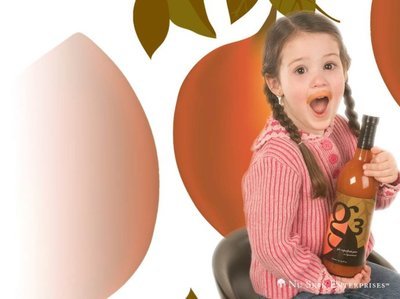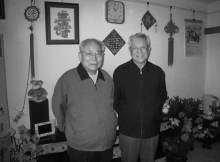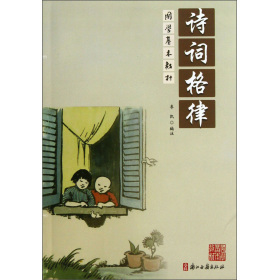D.S.Bruke, C.R.Smidt and L.T.Vuong*
Pharmanex Research Institute, PharmanexLLC, 75 West Center Street, Provo, UT 84601, USA
Vitalea Science,Inc, 1233 E. Beamer Street, Unit C, Woodland, CA95776, USA
摘要
发达国家的大部分饮食远没有达到被推荐的果实和蔬菜的量,因而缺乏重要营养物的摄入。木鳖果(Gac)产于东南亚,含有高浓度的番茄红素和b-胡萝卜素。在越南,木鳖果被民众所珍视,因为它能促进长寿和生命活力。在一个越南儿童补充剂的临床试验中,发现木鳖果提高血清维生素A水平的作用比合成胡萝卜素更高。刺梨产于中国西南部,传统用以舒缓紧张和延缓老化。它富含维生素C和其他植物营养素。在人体中,刺梨能增强免疫功能和提高红细胞SOD水平。枸杞也起源于中国,传统上用于长寿,健康和视力改善。它富含有高利用率的玉米黄质。动物试验中,枸杞显示有调节免疫和抗氧化的作用。在人体试验中,它能显著地提高血中SOD水平。沙棘产于西伯利亚和喜马拉雅山,传统用以祛痰和助消化。动物试验中,它有保肝和抗氧化作用。人体试验中,沙棘显示能大大提高饮食中类黄酮和维生素C的摄入,并有益于心血管。因此,由于它们的营养价值,摄入这些果实可极大地增强食物的健康效果。
关键词:抗氧化剂;类胡萝卜素;沙棘;枸杞;木鳖果;刺梨
引言
在过去的25年间,大量的人体试验达成一致意见,每天食用5-9份水果和蔬菜有助于预防许多慢性疾病,但是大部分人的摄入均未能达到这个水平。许多对健康有益的作用可能是由于这些食物中含有维生素、矿物质,抗氧化剂,类胡萝卜素和其它植物营养素。因此,营养素含量高的果实加入到饮食中去是最理想的。有4种少为人知的极具营养价值的果实:木鳖果、刺梨、枸杞、和沙棘。本文将评估它们的抗氧化性能,营养含量,传统民间用法和有益健康的科学资料。
一、木鳖果
传统用法和特性
在民间,木鳖果被列为有许多重要健康效益的果实。生长在越南和南亚一些区域的人将木鳖果尊为“天赐之果”并称赞它有促进长寿,增进活力命和健康的能力。木鳖果为个大,鲜红色的果实,又称为“甜葫芦”。木鳖果为长年攀缘植物,木鳖果藤一季可生出多到60只,每只重1-3公斤的果实。它的籽在中药中称为木鳖子,具有消散和清凉性能,用于肝脾疾病,疗伤,痔疮,青肿,水肿和化脓。越南人常用木鳖果做一道菜,称为“Xoigac木鳖红米糕”,它由木鳖果与煮熟的米饭混合,使其具有红色和独特的香味。因此在节庆日,例如结婚,农历新年和其他重大庆祝时均供以“Xoigac”它主要是遮盖了米的白色,因为白色被认为是死亡色。除用于制造“Xoigac”外,其种子的外膜用作儿童,哺乳和怀孕妇女的强壮药,治疗“干眼”(眼干燥症)及夜盲。除了当地人,木鳖果不为世界许多人所熟悉。木鳖果很容易生长,但有季节性,每年只有三个月的适宜生长期,9月开始收获一直持续到12月。在越南,木鳖果藤常见长在农家门口的栅架上。由于木鳖果生长的季节性和不了解它的潜在健康价值,世界上很少将其用于食品。
1、
2、
3、
4、

5、
营养成分
木鳖果渐渐地被人们认识到它是类胡萝卜素,特别是b-胡萝卜素和番茄红素的主要来源。1941年首次证实木鳖果含有类胡萝卜素。然而,只在最近发现木鳖果的b-胡萝卜素和番茄红素含量很高。在种籽膜中番茄红素,可高达308微克/克,是其他富含番茄红素果实和蔬菜的10倍左右。在木鳖果肉中,其番茄红素平均水平更高,在新鲜的原料中为2227微克/克。果肉还含有高水平的脂肪酸,由17%至22%重量。从木鳖果肉中提取的油(木鳖果油)的总类胡萝卜素浓度为5700微克/毫升其中2710微克为b-胡萝卜素。此油还富含维生素E。果肉中的脂肪酸对脂溶性营养素包括特别低脂饮食中的类胡萝卜素的吸收起到重要的作用。此外,木鳖果油已被越南的妇女和儿童所接受,对此油的摄取可减少对猪油的摄入。因此,木鳖果是一种能提供富含抗氧化剂且具良好生物利用度的可接受的资源。
番茄红素对健康潜在的好处
由于木鳖果每克的番茄红素超过了番茄中的70倍,这意味着对前列腺健康可能很有意义。 流行病学研究显示,大量地摄入番茄,番茄产品和丰富的番茄红素,或血液中有高水平的番茄红素与降低前列腺癌的危险有显著关联(Deming等,2002;Giles等,1997;Giovanucci等,1995;Giovanucci等,2002;Lu等,2001;Vogt等,2002)。在有26名新被诊断为前列腺癌的男性的一个双盲实验中,在前列腺切除术前给予每天15毫克的番茄红素三个星期。结果观察到肿瘤小于4毫米的对象数显著增加,而超大前列腺组织的癌数量减少(Kucuk等,2001)。这些效果可归功于番茄红素的抗氧化和DNA保护特性(Riso等,1999;Porrini和Riso, 2000)。
临床研究
人体中的研究已确认木鳖果中的b-胡萝卜素具有高度的生物利用度。 在一个有185名越南学前儿童加入的双盲研究中,部分儿童给予含3.5毫克b-胡萝卜素/每天的Xoi Gac 而其它对象则给予看起来完全相同的含5毫克 b-胡萝卜素/每天的粉剂30天。结果前组儿童的血浆维生素A比后组显著地高。
血浆维生A,a-胡萝卜素,玉米黄素和番茄红素水平在服用木鳖果的儿童中也显著增加(Voung等,2002)。这点非常重要,因为在全球范围内,维生素A的缺乏一直是个主要的健康问题并导致儿童中的失盲(Maurin andRenard,1997;Underwood and Arthur,1996;Pinnock,1995)。
很可能木鳖果中的脂肪酸正是使其比合成b-胡萝卜素有更高生物利用度的原因(Vuong等,2002)。反之,食用某些富含b-胡萝卜素的食品则显示出较少的血浆b-胡萝卜素或维生素A浓度的增加(De Pee等,1998;Vuong 等,2002)。
二、刺梨(Rosa Roxburghii)
传统用途:刺梨,也被称作甜栗玫瑰(VanRensburg等,2005),是一种中国西南地区(贵州省)的野生植物,传统上用于长寿,抗癌,免疫和动脉粥样硬化(Zhang等,2001)。与木鳖果一样,刺梨的资源有限(van Rensburg等,2005)。
营养成分
刺梨具有许多对健康有益的抗氧化活性组分。原儿茶酸,一种在刺梨中被发现的双酚化合物表现出抗氧化活性(Psotova等,2003;Srokaand Cisowski,2003;Yeh and Yen,2003),和由于清除羟自由基而抑制DNA的断裂(Ueda等,1991)。刺梨也富含维生素C和E,生物素,多酚,多糖,锌,锶和SOD(Zhang等,2001)。这一抗氧化背景可能有助于刺梨维生素C的保存(Yoshida等,1987)从而与刺梨对心血管的好处有关(Zhang等,2001)。
临床前试验
动物研究已表明刺梨可能具有潜在的心血管,抗氧化及延长寿命的好处。 在喂胆固醇食料的兔子和鹌鹑中,刺梨汁能显著改善动脉粥样硬化,降低血浆脂肪,和增加红细胞SOD的活性(Zhang等,2001;Hu等,1994)。果蝇喂食刺梨后与对照组相比,能显著增加其寿命期限。
临床研究
两个关于刺梨的双盲安慰剂-对照的研究显示出刺梨有抗氧化,心血管和智力的好处。 在第一个试验中,60名年龄在50-75岁的男性或女性每天服用两次10毫升刺梨提取物二个月,而安慰剂组有61名同样年龄范围的对象。补充刺梨后,天然杀伤细胞活性和红细胞过氧化氢酶,SOD及谷胱甘肽(GSH)水平都有增加,而血清脂质过氧化物则减少。
心血管功能的几种指标和微循环都得到改善并且外周血管阻力降低。单色和选择性光反应时间减少,记忆商值得到改善。所有这些变化都是显著的,而对照组没有这些变化(Ma等,1997)。
在另一个安慰剂-对照的随机,单盲试验中,36名年轻,健康,不吸烟的对象接受安慰剂或胶囊的刺梨补充品5个星期。后者血液中GSH的还原型/氧化型比值和血浆抗氧化容量显著增加。 提示刺梨抗氧化剂保护还原的GSH,使谷胱甘肽的氧化还原状态产生可见的变化(VanRensburg等,2005)。
三、枸杞子(LYCIUM BARBARUM 或L. CHINENSE)
传统应用
枸杞子原产于中国的中北部,在民间有悠久的使用历史,而作为中草药也有2000年的历史,用于延寿,明目,养精以及缓解头痛等。自唐朝(公元1000-1400)以来,枸杞子就因为其多种传统健康功效,如滋阴、补肝肾、活血等而闻名于世。在古代,人们用枸杞子煲汤、炖菜、泡茶,或干脆象嚼葡萄干一样直接食用。
临床前研究
动物和体外实验中表明枸杞子具有抗氧化,增强免疫,抗辐射,抗衰老以及其他健康功效。在体外,枸杞子中的类胡萝卜素能以剂量依赖方式清除活性超氧化物和羟基自由基(Ren,etal.,1995);在大鼠中,枸杞子能抑制血红细胞膜上的脂质过氧化(Li,etal.,2002)。在接种S180肿瘤细胞株的小鼠中,枸杞子能增强其免疫系统 功能(Gan,et al.,2004),枸杞子中名为LbGp2的糖缀合物具有显著的免疫活性(Peng andTian,2001)。小鼠在接受辐射前,腹腔高剂量注射枸杞子根或地上部分提取物,连续7天,对骨髓具保护作用而使小鼠避免因辐射而死亡(有效剂量为500而不是250mg/kg),其作用机制可能是造血干细胞受辐射后能增强其修复或增殖功能,而促进再生(Hsu,et al.,1999)。枸杞子能延长雌雄果蝇(Drosophila melanogaster)最高寿命,并且能延长雄性果蝇的平均寿命。在D-半乳糖诱导的小鼠衰老模型中,与对照组相比,20 mg/kg/d剂量的枸杞子能显著提高肝脏和血清中的超氧化物歧化酶(SOD)和谷胱甘肽过氧化物酶的水平,同时降低脂褐素水平,并以剂量依赖关系显著降低丙二醛的水平,高剂量治疗组的丙二醛水平甚至下降到与幼鼠近似(Wang,etal.,2002)。由于枸杞子含清除自由基功能的类胡萝卜素,因此具有显著的降血压,保肝和抗哮喘功能(Huang,etal.,1998),以及降血糖和降血脂功能(Luo,et al.,2004)。
临床研究
年龄老化会伴随机体氧化应激升高,而枸杞子则在人体有抗衰老作用。让25位64-80岁生活能自理的中国老年人,每天服用50克枸杞子连续10天后,能显著升高血中SOD和血色素水平,分别达到48%和12 %,并降低脂质过氧化物水平达到65%(Li, etal.,1991),同时改善老年相关症状。另一实验中,42位平均年龄68岁的健康志愿者(35男性,7位女性),36位每天服用枸杞子提取物,一天两次,每次50 毫克,另6位志愿者作为对照。服用枸杞子组的志愿者其眩晕,疲倦,胸闷,失眠以及厌食等不适症状得到显著改善,而对照组变化则不明显(显著性未标出){Li,1989)。
枸杞子不仅玉米黄素含量丰富,其生物利用度也很好。在一随机,单盲交叉实验中,有12位志愿者参加分为两组,食用平衡早餐,每日分别服用5毫克的3R-3’R玉米黄素,一组为非酯化的(化学合成)玉米黄素,另一组服用枸杞子来源玉米黄素二棕榈酸酯,分散于150克的酸奶中。随后3周排空期不服用任何玉米黄素,接着两组掉换服用两种形式的玉米黄素。结果表明服用枸杞子来源的玉米黄素二棕榈酸酯,其血浆玉米黄素浓度24小时曲线下面积显著(约两倍)高于对照组{Breithaupt,et al., 2004}。
枸杞子用于眼睛健康非常有名。大量研究表明玉米黄素能预防衰老相关的眼睛疾病。例如,较多食用富含叶黄素和玉米黄素的绿叶蔬菜,能减少白内障(Brownet al., 1999; Chasan-Taber et al.,1999)以及年龄相关性黄斑变性(ARMD)的发生的风险(Seddon etal.,1994)。另外和健康人相比,ARMD患者的血清(Bernstein et al., 2002)和视网膜中(Bone etal., 2001)的玉米黄素水平较低。还有大量研究表明玉米黄素对于眼睛健康很重要(Beatty, et al, 2004;Bone, et al., 1985; Bone, etal., 1988; Bone, et al., 1992; Bone, etal., 1993; Bone, et al., 2003; Mozzaffarieh, et al, 2003; Gale, etal., 2003; Johnson, et al, 2002)。
四、沙棘(SB, HIPPOPHAE RHAMNOIDES)
传统应用和历史
在俄罗斯和中国,沙棘历史悠久并获得广泛应用。在中国药典中,沙棘被认为有如下功效:祛痰,止咳,促消化,消食,理气导滞等(Thomas,et al., 2004)。
沙棘的种子和果油在俄罗斯和中国被用于治疗皮肤病{Yang, et al.,2000)。自从上世纪40年代俄罗斯就开始着手研究沙棘果实,叶子和树皮中的活性化合物。据报导,沙棘分别用在俄罗斯宇航员食品(果实)和面霜(油)以保护他们免受太空中阳光的强烈辐射(Thomas,et al., 2004)。
临床前研究
沙棘被证明具有广泛的抗氧化和细胞保护功效。在淋巴细胞中,沙棘能抑制铬诱导的自由基生成,细胞调亡和DNA裂解,并使其抗氧化能力恢复到正常水平。淋巴细胞的增殖会受到铬的抑制,而沙棘能对抗这一过程。这些结果表明沙棘具有显著的细胞保护功能,这可能与其抗氧化功能有关(Geetha,et al., 2002; Geetha, et al.,2003)。在辐射诱导的氧化应激条件下,沙棘能保护线粒体使其保持功能完整性(Goel, et al., 2005)。
在白化病大鼠中,沙棘的叶提取物对铬诱导的氧化损伤具有显著的保护作用(Geetha, et al.,2003)。大鼠腹腔注射尼古丁3周,给予沙棘和维生素E后能抑制尼古丁诱导的丙二醛水平上升,沙棘而非维生素E能抑制尼古丁诱导的血红细SOD水平下降。另外,与仅给予尼古丁或尼古丁加维生素E的对照组的小鼠相比,给予沙棘的小鼠血红细胞谷胱甘肽过氧化物酶(GSHPx)的活性增强。维生素E和沙棘组的血浆维生素A水平高于尼古丁和对照组(Suleyman,et al.,2002)。小鼠实验表明沙棘具有保肝功能,鼠给予四氯化炭、对乙氨基酚和乙醇后,沙棘能显著抑制由这些化学物质所导致的血清谷草转氨酶,谷丙转氨酶和丙二醛水平上升以及由对乙氨基酚诱导的谷胱甘肽水平降低。这表明肝脏由于脂质过氧化而导致的损伤程度降低(Lipkanand Oliinyk, 2000; Cheng, 1990; Cheng, et al., 1992; Cheng, et al.,1994)。
沙棘清除自由基的能力很大程度归功与其酚类化合物组分,主要是黄酮醇类,还有少量儿茶素和酚酸。维生素C也是主要的抗氧化组分之一(Rosch,et al., 2003)。
临床研究
在临床实验中,沙棘或其组成成分被证明有心血管方面的健康功效,并能增加一些重要的食物营养素如黄酮类化合物和维生素C的摄入。让35位高血压患者连续8周服用沙棘总黄酮,能减少仰卧等长收缩训练导致的心率,血压和血浆儿茶酚胺水平的上升{Zhang,et al., 2001)。服用沙棘果油5克/天能显著升高特应性皮炎患者高密度脂蛋白胆固醇水平(Yang, et al.,1999)。让20位健康志愿者分别服用沙棘果汁或安慰剂共8周,能分别增加β-胡萝卜素,α-生育酚,黄酮类化合物和维生素C的日摄入量,分别达到1.0,3.2,355和462毫克/天(Eccleston,et al., 2002)。
结语
木鳖果、刺梨、枸杞和沙棘为富含营养素的果实,单独或一起食用能显著增强饮食的健康功效。临床研究表明,这些水果中的一种或几种,能帮助机体恢复正常的维生素A水平,同时促进抗氧化能力,心血管,脑力健康以及免疫功能。木鳖果和枸杞中的类胡萝卜素不仅含量高,且生物利用度也好,因此可能促进前列腺和眼睛健康,减少老年黄斑变性和白内障的发生。由于刺梨富含活性天然抗氧化剂,可能有助于缓解某些衰老症状,它能延长果蝇寿命,增强老年人的心血管和大脑的某些功能,并减少氧化应激损伤。大量初步的研究结果表明,沙棘具有显著的抗氧化功能,在许多生理情况下,如筋疲力尽的运动,拥挤的道路上开车,吸烟,减肥等,减少氧化应激损伤。沙棘还对一些器官如肝脏和循环系统等有保护作用。总之,食用这些水果能为机体提供广泛的健康功效,增强公众意识并增加对这些水果的摄入,可能会具有显著的社会效应。
References
Aoki, H., Kieu, N.T., Kuze, N., Tomisaka, K. and Van Chuyen, N.(2002). Carotenoid pigments in GAC fruit Momordica cochinchinensisSPRENG). Biosciece.Biotechnology, andBiochemistry66,:2479-82.
Beatty S., Nolan, J., Kavanagh, H. and O’Donovan, O. (2003) Macularpigment optical density and its relationship with serum and dietarylevels of lutein and zeaxanthin. Archives of Biochemistry andBiophysics 430:70-76.
Bernstein, P.S., Zhao, D.Y., Wintch, S.W., Ermakov, I.V., Mcclane,R.W. and Gellermann, W. (2002) Resonance Raman measurement ofmacular carotenoids in normal subjects and in age-related maculardegeneration patients. Ophthalmology 109:1780-1787.
Bone, R.A., Landrum, J.T. and Tarsis, S.L. (1985). Preliminaryidentification of the human macular pigment. Vision Research 25,1531-1535.
Bone, R.A., Landrum, J.T., Fernandez, L. and Tarsis, S.L. (1988).Analysis of the macular pigment by HPLC: retinal distribution andage study. Investigative Ophthalmology and Visual Sciences 29,843-849.
Bone, R.A., Landrum, J.T. and Caines A. (1992). Optical densityspectra of the macular pigment in vivo and in vitro. VisionResearch 32, 105-110.
Bone, R.A., Landrum, J.T., Hime, G.W., Cain, S.A. and Zumor, J.(1993) Stereochemistry of the human macular carotenoids.Investigative Ophthalmology and Visual Science 34, 2033-2040.
Bone, R.A., Landrum, J.T., Mayne, S.T., Gomez, C.M., Tibor, S.E.and Twaroska, E.E.
(2001) Macular pigment in donor eyes with and without AMD: acase-control study. Investigative Ophthalmology and Visual Science42, 235-240.
Bone, R.A., Landrum, J.T., Guerra, L.H. and Ruiz, C.A. (2003)Lutein and zeaxanthin dietary supplements raise macular pigmentdensity and serum concentrations of these carotenoids in humans.Journal of Nutrition 133, 992-998.
Breithaupt, D.E., Weller, P., Wolters, M. and Hahn, A. (2004).Comparison of plasma responses in human subjects after theingestion of 3R,3R’-zeaxanthin dipalmitate from wolfberry. BritishJournal of Nutrition 91, 707-713.
Brown, L., Rimm, E.B., Seddon, J.M., Giovannucci, E.L.,Chasan-Taber, L., Spiegelman, D., Willett, W.C., Hankinson, S.E.(1999) A prospective study of carotenoid intake and risk ofcataract extraction in US men. The American Journal of ClinicalNutrition 70, 517-24.
Chasan-Taber, L., Willett, W.C., Seddon, J.M., Stempfer, M.J.,Rosner, B., Colditz, G.A., Speizer, F.E. and Hankinson, S.E. (1999)A prospective study of carotenoid and vitamin A intakes and risk ofcataract extraction in US women. The American Journal of ClinicalNutrition 70, 509-516.
Cheng. T., Li, T., Duan, Z., Cao, Z., Ma, Z. and Zhang, P. (1990)[Acute toxicity of flesh oil of Hippophae rhamnoides L. and itsprotection against experimental hepatic injury]. Zhongguo Zhong YaoZa Zhi 15, 45-7, 64.
Cheng, T.J. (1992) [Protective action of seed oil of Hippophaerhamnoides L. (HR) against experimental liver injury in mice].Zhonghua Yu Fang Yi Xue.Za Zhi26, 227-9.
Cheng, T.J., Pu, J.K., Wu, L.W., Ma, Z.R., Cao, A. and Li TJ.(1994) An preliminary study on hepato-protective action of seed oilof Hippophae rhamnoides L. Zhongguo Zhong Yao Za Zhi 19,367-70,384.
Deming, D.M., Boileau, T.W-M., Heintz, K.H., Atkinson, C.A. andErdman, J.W., Jr. (2002) Carotenoids: Linking chemistry,absorption, and metabolism to potential roles in human health anddisease. In: Cadenas, E. and Packer, L. (Eds), Handbook ofAntioxidants (New York: New York: Marcel-Dekker), pp.189-221.
de Pee, S., West, C.E., Permaesih, D., Martuti, S., Muhilal, andHautvast, J.G.A.F.. (1998) Orange fruit is more effective than aredark-green, leafy vegetables in increasing serum concentration ofretinol and?-carotene in schoolchildren in Indonesia. The AmericanJournal of Clinical Nutrition68,:1058-67.
De Shan, M., Hu, L.H. and Chen ZL. (2001) A new multifloranetriterpenoid ester form Momordica cochinchinensis Spreng. NaturalProduct Letters 15, 139-145.
Do, T.L..(1999)Nhung Cay Thuoc va Vi Thuoc Viet Nam [MedicinalPlants and Drugs of Vietnam]. Hanoi: (Nha Xuat Ban Khoa Hoc va KyThuat).
Eccleston, C., Baoru, Y., Tahvonen, R., Kallio, H., Rimbach, G.H.and Minihane, A.M.. (2002) Effects of an antioxidant-rich juice(sea buckthorn) on risk factors for coronary heart disease inhumans. Journal of Nutritional Biochemistry13, 346-54.
Gale, C.R., Hall, N.F., Phillips, D,I.W., and Martyn, C.N. (2003)Lutein and zeaxanthin status and risk of age-related maculardegeneration. Investigative Ophthalmology & VisualScience 44, 2461-2465.
Gan, L., Hua Zhang, S., Liang Yang, X. and Bi Xu H.(2004)Immunomodulation and antitumor activity by apolysaccharide-protein complex from Lycium barbarum. IntImmunopharmacology. 4, 563-9.
Gao, X., Ohlander, M., Jeppsson, N., Bjork, L and Trajkovski V.(2000) Changes in antioxidant effects and their relationship tophytonutrients in fruits of sea buckthorn (Hippophae rhamnoides L.)during maturation. Journal of Agricultural and Food Chemistry48,1485-90.
Geetha, S., Sai, R.M., Singh, V., Ilavazhagan, G. and Sawhney,R.C.. (2002) Anti-oxidant and immunomodulatory properties ofseabuckthorn (Hippophae rhamnoides)--an in vitro study. Journal ofEthnopharmacology 79, 373-8.
Geetha, S., Sai Ram, M., Mongia, S.S., Singh, V., Ilavazhagen, G.and Sawhniey RC. (2003) Evaluation of antioxidant activity of leafextract of Seabuckthorn (Hippophae rhamnoides L.) on chromium (VI)induced oxidative stress in albino rats. Journal ofEthnopharmacology87, 247-51.
Giles, G., Ireland, P. (1997) Diet, nutrition, and prostate cancer.International Journal of Cancer 72, 13-17.
Giovannucci, E., Ascherio, A., Rimm, E.B., Stampfer, M.J., Colditz,G.A., and Willett, W. (1995) Intake of carotenoids and retinol inrelation to risk of prostate cancer. J Natl Cancer Inst 87,1767-76.
Giovannucci, E., Rimm, E.B., Liu, Y., Stampfer, M.J., and Willett,M.C. (2002). A prospective study of tomato products, lycopene, andprostate cancer risk. J Natl Cancer Inst 94, 391-98.
Goel, H.C., Gupta, S., Garg, A.P. and Bala, M. (2005) Protection ofmitochondrial system by Hippophae rhamnoids L. Againstradiation-induced oxidative damage in mice. Journal of Pharmacy andPharmacology57, 135-43.
Grenado, F., Olmedilla, B. and BlancoI. (2003) Nutritional andclinical relevance of lutein in human health. British Journal ofNutrition 90:487-502.
Guichard, F., and Bui, D.S.. (1941) La matiere colorante du fruitdu Momordica Cochinchinnensis Spr.Annales de l'ecole Superieure deMedecine et de Pharmacie de l'IndochineV, 41-42.
Hsu, H.Y., Yang, J.J., Ho, Y.H. and Lin, C.C. (1999) Difference inthe effects of radioprotection between aerial and root parts ofLycium chinense. Journal of Ethnopharmacology. 64,101-8.
Hu, W.Y., Bai, Y., Han, X.F. and He, W.H.. Anti-atherosclerosiseffect of Rosa roxburghii tratt. Chinese Pharmaceutical Journal(Zhongguo yaoxue Zazhi) 29, 529-532.
Huang, Y., Tan, A., Shen, Y. and Lu, J. (1998) [Scavenging effectof total flavonoids of lycium barbarum L onactive oxygen radicalsand inhibitory effects on heat output from L1210 cells]. Wei ShengYan.Jiu.27, 109-11, 115.
Ishida, B.K., Turner, C., Chapman, M.H. and McKeon, T.A.. (2004)Faty acid and carotenoid composition of gac (Momordicacochinchinensis Spreng) fruit. Journal of Agricultural and FoodChemistry 52, 274-278.
Johnson, E.J. (2002) The role of carotenoids in human health.Nutrition in Clinical Care 5, 56-65.
Krinsky, N.J., Landrum, J.T. and Bone, R.A. (2003) Biologicmechanisms of the protective role of lutein and zeaxanthin in theeye. Annual Review of Nutrition 23, 171-201.
Kucuk, O., Sarkar, F.H., Sark, W., Djuric, Z., Pollak, M.N,Khachik, F., Li, Y.W., Banerjee, M., Grignon, D., Bertram, J.S.,Crissman, J.D., Pontes, E.J. and Wood, D.P., Jr. (2001) phase IIrandomized clinical trial of lycopene supplementation beforeradical prostatectomy. Cancer Epidemiology Biomarkers& Prevention 10, 861-868.
Kuhnlein, H.V. (2004). Karat, Pulque, and Gac: Three shining startsin the traditional food galaxy. Nutrition Reviews62, 439-442.
Li, D.Y., Yuan, X.L., Xia, H.F., Ma, L., Guo, Z.Y., Shen, Y.Y. andRong, Q.Z.. (1989) Preliminary clinical observations for effects ofNing Xia wolfberry extract on old peoples. Chinese Traditional andHerbal Drugs20, 26-28.
Li, G., Yang, J., Ren, B. and Wang, Z.. (2002)[Effect of lyciumbarbarum L on defending free radicals of mice caused by hypoxia].Wei Sheng Yan Jiu31,30-31.
Li, W., Dai, S.Z., Ma, W. and Gao, L. (1991) Effects of oraladministration of Wolfberry on blood superoxide dismutase (SOD),hemoglobin (Hb) and lipid peroxide (LPO) levels in old people.Chinese Traditional and Herbal Drugs22, 251,268.
Lipkan, G.M. and Oliinyk OA. (2000) [Hepatoprotective effect of thesea buckthorn-and-pinks oil]. Likars’Ka .Sprava. 96-9.
Luo, Q., Cai, Y., Yan, J., Sun, M. and Corke, H. (2004)Hypoglycemic and hypolipidemic effects and antioxidant activity offruit extracts from Lycium barbarum. Life Science76, 137-49.
Lu, Q.Y., Hung, J.C., Heber, D., Go, V.L.W., Reuter, V.E.,Cordon-Cardo, C., Scher, H.I., Marshall, J.R., and Zhang, Z.F.Inverse associations between plasma lycopene and other carotenoidsand prostate cancer. Cancer Epidemiology, Biomarkers& Prevention 10, 749-56.
Ma, Y.X., Zhu, Y., Wang, C.F., Wang, Z.S., Chen, S.Y., Shen, M.H.,Gan, J.M., Zhang, J.G., Gu, O. and He, L. (1997) The agingretarding effect of 'Long-Life CiLi'. Mechanisms of Ageing andDevelopment96, 171-80.
Maurin, J.F. and Renard, J.P. (1997) Ocular manifestations ofvitamin A deficiency and their prevention. Revue InternationalTrachome Pathologie Oculaire Tropicale Subtropicale Sante Publique74,21-42.
Mozaffarieh, M., Sacu, S. and Wedrich, A (2003). The role ofcarotenoids, lutein, and zeaxanthin, in protecting againstage-related macular degeneration: A review based on controversialevidence. Nutrition Journal 2:20.
Peng, X. and Tian, G. (2001) Structural characterization of theglycan part of glycoconjugate LbGp2 from Lycium barbarum L.Carbohydrate Research331. 95-9.
Pinnock, C. Vitamin A. The Nursing Journal of India 82,307-308
Porrini, M. and Riso P. (2000) Lymphocyte lycopene concentrationand DNA protection from oxidative damage is increased in womenafter a short period of tomato consumption. Journal of Nutrition130, 189-192.
Psotova, J., Lasovsky, J. and Vicar, J. (2003) Metal-chelatingproperties, electrochemical behavior, scavenging and cytoprotectiveactivities of six natural phenolics. Biomedical papers of theMedical Faculty of the University Palacky, Olomouc,Czechoslovakia147,:147-53.
Ren, B., Ma, Y., Shen, Y. and Gao, B. (1995) [Protective action ofLycium barbarum L. (LbL) and betaine on lipid peroxidation oferythrocyte membrane induced by H2O2]. Zhongguo Zhong Yao Za Zhi20,303-4, inside.
Riso, P., Rinder, A., Santangelo, A. and Porrini, M. (1999) Doestomato consumption effectively increase the resistance oflymphocyte DNA to oxidative damage? The American Journal ofClinical Nutrition 69, 712-718.
R?sch, D., Bergmann, M., Knorr, D. and Kroh, L.W. (2003)Structure-antioxidant efficiency relationships of phenoliccompounds and their contribution to the antioxidant activity of seabuckthorn juice. Journal of Agricultural and Food Chemistry51,4233-9.
Seddon, J.M., Ajani, U.A., Sperduto, R.D., Hiller, R., Blair, N.,Burton, T.C., Farber, M.D., Gragoudas, E.S., Haller, J., Miller,D.T., Yanmuzi, L.A. and Willett,W. (1994) Dietary carotenoids,vitamins A, C, and E, and advanced age-related maculardegeneration: Eye Disease Case-Control Study Group. Journal of theAmerican Medical Association 272, 1413-1420.
Shaban, H. and Richter C. (2002) A2E and blue light in the retina:the paradigm of age-related macular degeneration. BiologicalChemistry 383, 537-545.
Shadeque, A. and Sharma Baruah, G.K. (1984) Sweet gourd : A popularvegetable of Assam. Indian Farming34, 25, 35.
Sies, H. and Stahl, W. (2003) Non-nutritive bioactive constituentsof plants : lycopene, lutein and zeaxanthin. Instructional Journalfor Vitamin and Nutrition Research 73, 95-100.
Sroka, Z. and Cisowski, W.. (2003) Hydrogen peroxide scavenging,antioxidant and anti-radical activity of some phenolic acids. Foodand Chemical Toxicology 41, 753-8.
Suleyman, H., Gumustekin, K., Taysi, S., Keles, S., Oztasan, N.,Aktas, O., Altinkaynak, K., Timur, H., Akcay, F., Akar, S., Dane,S. and Gul, M. (2002)Beneficial effects of Hippophae rhamnoides L.on nicotine induced oxidative stress in rat blood compared withvitamin E. Biological and Pharmaceutical Bulletin 25,1133-1136.
Thomas, S.C. Li and Thomas, H.J.. (2004) Sea Buckthorn (Hippophaerhamnoids L.): Production and Utilization. HerbalGram62 ,74.
Ueda, J., Saito, N,. Shimazu, Y. and Ozawa, T. (1996) A comparisonof scavenging abilities of antioxidants against hydroxyl radicals.Archives of Biochemistry and Biophysics333, 377-84.
Underwood, B.A. and Arthur, P. (1996) The contributions of vitamina to public health. FASEB Journal 10, 1040-1049.
Van Rensburg, C.J., Erasmus, E., Loots, D.T., Oosthuizen, W.,Jerling, J.C., Kruger, H.S., Louw, R., Brits, M,. and van derWesthuizen, F.H. (2005). Rosa roxburghii supplementation in acontrolled feeding study increases plasma antioxidant capacity andglutathione redox state. European Journal of ClinicalNutritiononline print, March 24.
Vogt, T.M., Mayne, S.T., Graubard, B.I., Swanson, C.A., Sowell,A.L., Schoenberg, J.B., Swanson, G.M., Greenberg, R.S., Hoover,R.N., Hayes, R.B., and Zeigler, R.G. (2002) Serum lycopene, otherserum carotenoids, and risk of prostate cancer in US Blacks andWhites. American Journal of Epidemiology 155, 1023-1032.
Vo-Van-Chi. (1997)Tu Dien Cay Thuoc Viet Nam [A Dictionary ofMedicinal Plants of Vietnam]. (Ho-Chi-Minh City, Vietnam: Nha XuatBan Y Hoc).
Vu Dinh Trac. (1986) 100 Cay Thuoc, Van Linh Ba Chung [100medicinal plants, highlyeffective for many diseases]. Hanoi: Y HocViet-Nam Hoi Huu Xuat Ban), p.175.
Vuong, L. Vietnam Journal 1, Oct 2001.
Vuong, L.T., Dueker, S.R. and Murphy, S.P.. (2002) Plasmabeta-carotene and retinol concentrations of children increase aftera 30-d supplementation with the fruit Momordica cochinchinensis(gac). The American Journal of Clinical Nutrition75,:872-9.
Vuong, L.T. and King, J.C.. (2003) A method of preserving andtesting the acceptability of gac fruit oil, a goodsource ofbeta-carotene and essential fatty acids. Food and NutritionBulletin24, 224-30.
Vuong, L.T., Franke, A.A., Custer, L.J. and Murphy, S.P. (2005)Momordica cochinchinensis SPENG. (Gac) fruit contains highbeta-carotene and lycopene levels. Journal of Food Composition andAnalysis. In press.
Wang, J.H., Wang, H.Z., Zhang, M., and Zhang, S.H.. (2002)Anti-aging function of polysaccharides from Fructus lycii. ActaNutrimenta Sinica24, 189-191.
Yang, B., Kalimo, K.O., Mattila, L.M., Kallio, S.E., Katajisto,J.K., Peltola, O.J. and Kallio, H.P.. (1999) Effects of dietarysupplementation with sea buckthorn (Hippophae rhamnoides) seed andpulp oils on atopic dermatitis. Journal of NutritionalBiochemistry10, 622-30.
Yang, B., Kalimo, K.O., Tahvonen, R.L., Mattila, L.M., Katajisto,J.K. and Kallio, H.P. (2000) Effect of dietary supplementation withsea buckthorn (Hippophae rhamnoides) seed and pulp oils on thefatty acid composition of skin glycerophospholipids of patientswith atopic dermatitis. Journal of Nutritional Biochemistry 11,338-340.
Yeh, C.T. and Yen, G.C.. (2003) Effects of phenolic acids on humanphenolsulfotransferases in relation to their antioxidant activity.Journal of Agricultural and Food Chemistry 51, 1474-9.
Yeum, K.J., Taylor, R.A., Tang,G. and Russell, R.M. (1995)Measurement of carotenoids, retinoids, and tocopherols in humanlenses. Investigative Ophthalmology and Visual Sciences 36,2756-2761.
Yoshida, Y., Chen, X.M., Hatano, T., Fukushima, M. and Okuda, T.(1987) Tannins and related polyphenols of Rosaceous medicinalplants. IV. Roxbins A and B from Rosa roxburghii fruits. Chemicaland Pharmaceutical Bulletin 38, 1817-1822.
Zhang, C., Liu, X., Qiang, H., Li, K., Wang, J., Chen, D. andZhuang, Y.(2001) Inhibitory effects of rosa roxburghii tratt juiceon in vitro oxidative modification of low density lipoprotein andon the macrophage growth and cellular cholesteryl esteraccumulation induced by oxidized low density lipoprotein. ClinicaChimica Acta313, 37-43.
Zhang, X., Zhang, M., Gao, Z., Wang, J. and Wang, Z. (2001) Effectof total flavones of Hippophae rhamnoids L. on sympathetic activityin hypertension. Hua Xi Yi Ke Da Xue Xue Bao32, 547-550.
 爱华网
爱华网


